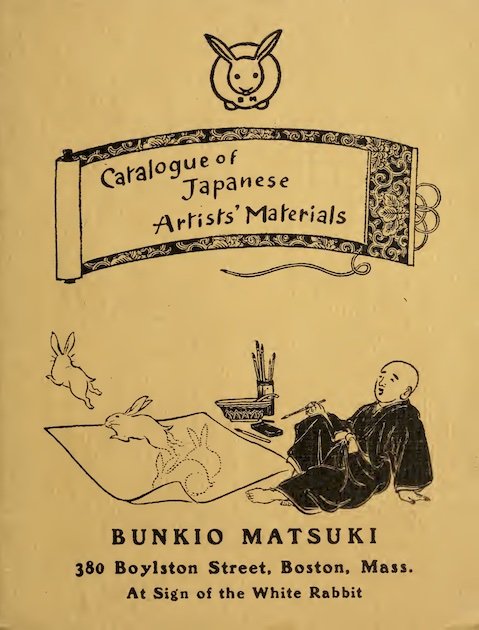The Sign of the White Rabbit
Matsuki’s catalogue from 1904 features an illustration of a Japanese man drawing rabbits that come to life and hop off the page.
In 1895, a Japanese merchant named Bunkio Matsuki (1867-1940) opened a shop in Boston called the White Rabbit that stocked over twenty thousand artworks and household items imported from Japan.
He presented his store as a museum, so that customers would see themselves as connoisseurs of fine art who could, with a purchase or two, become collectors (Rodman 496).
Matsuki stressed the authenticity of his wares by making it clear that he was in charge of purchasing direct from Japan, his home country.
He sold not only antiques but also contemporary Japanese art, setting it up as equal in quality to American and European art alike.
The smiling rabbit logo dates from 1899 and appeared on all printed materials related to Matsuki’s shop.
The catalogue includes artists’ materials such as brushes, ink, stencils and design books that enabled his customers, most of whom were middle-class women, to make their own Japanese-style designs. In this way, cute images like the rabbit logo made their way into American homes as an artistic inspiration.









